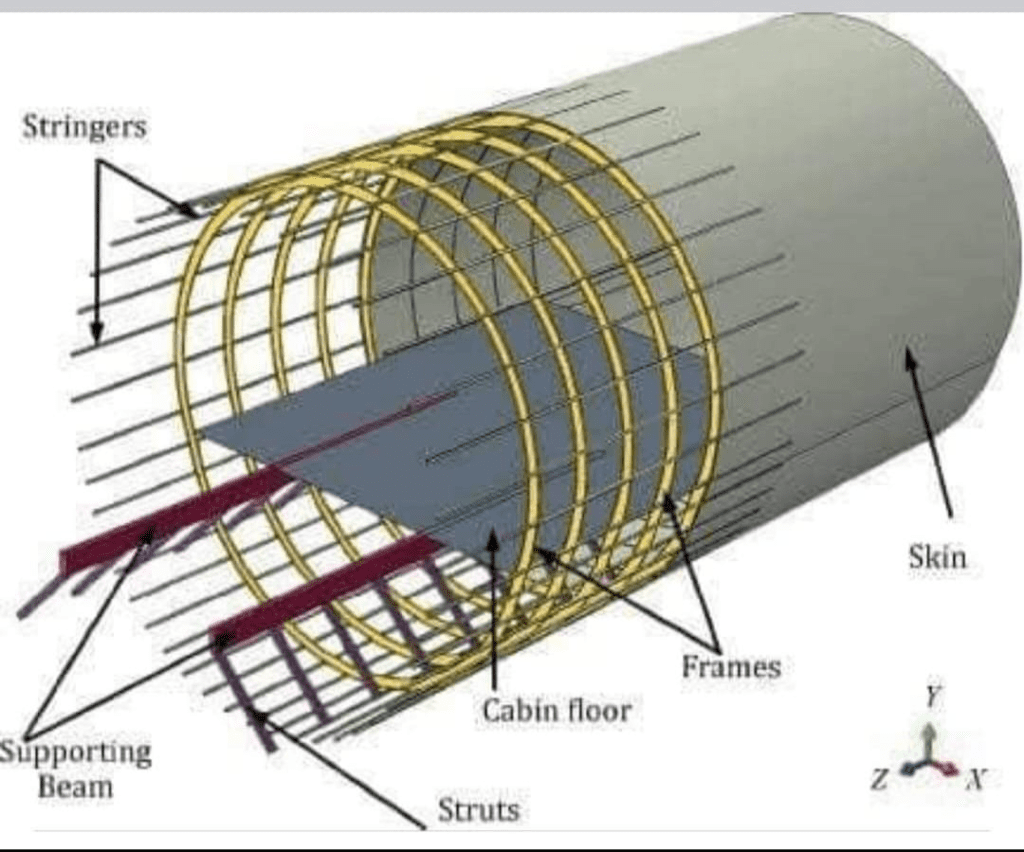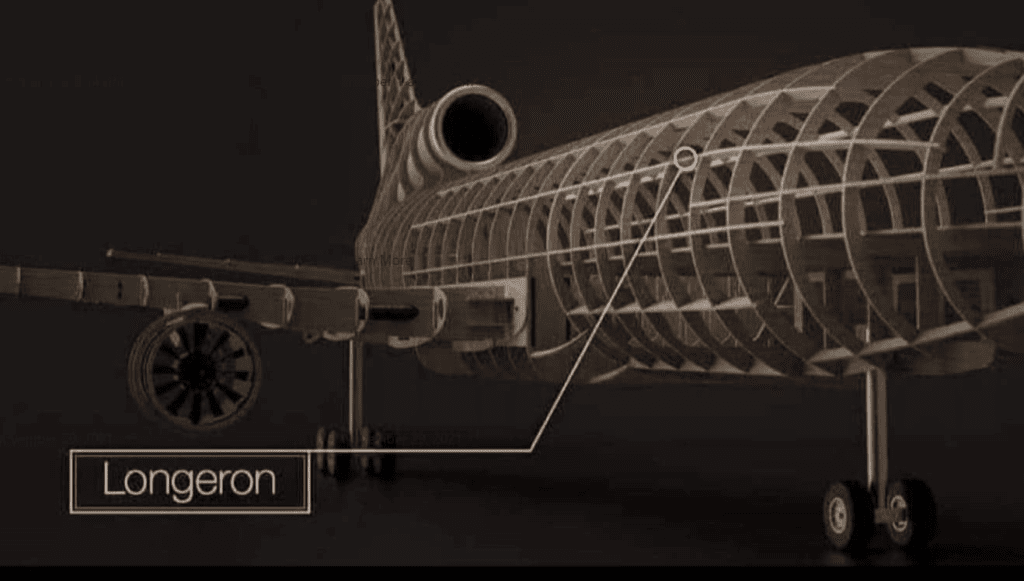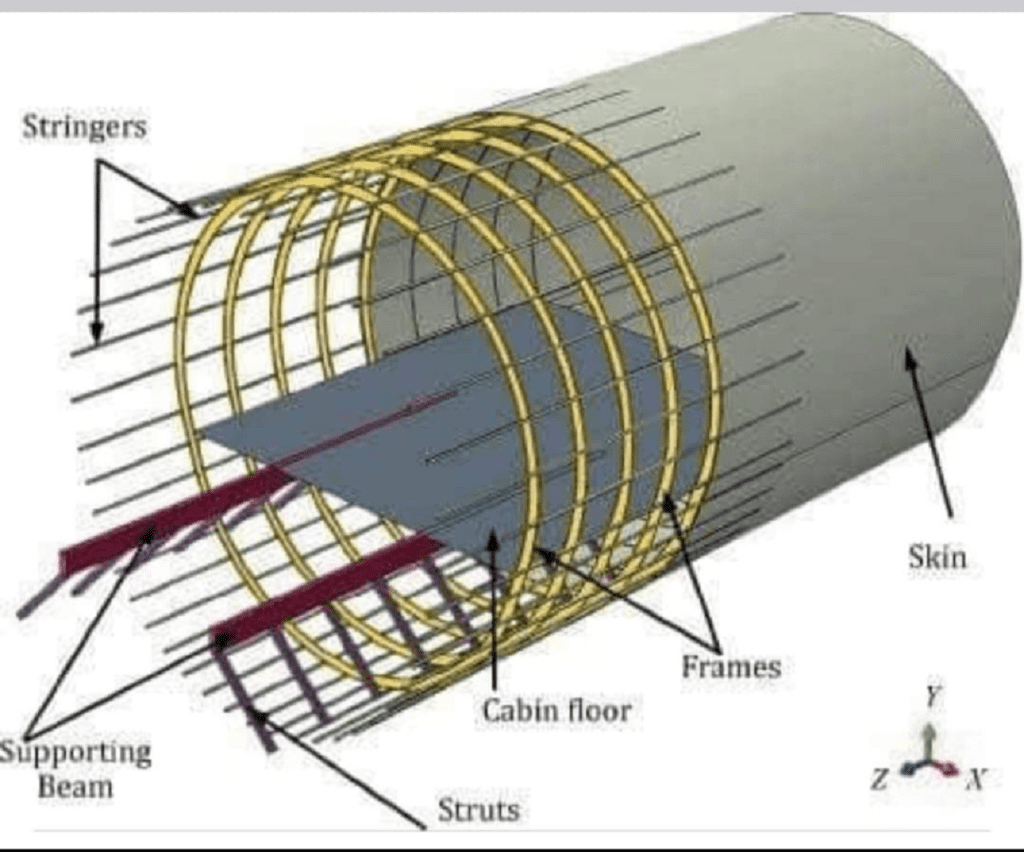
𝐋𝐨𝐧𝐠𝐞𝐫𝐨𝐧𝐬 Sometimes confused with, and referred to interchangeably as 𝐬𝐭𝐫𝐢𝐧𝐠𝐞𝐫𝐬, 𝐥𝐨𝐧𝐠𝐞𝐫𝐨𝐧𝐬 are spar-like structures that run lengthwise of the airplane’s fuselage or span wise of a wing.

The purpose they serve is to transfer loads and stresses from the aircraft’s skin to the formers. Longerons attach to multiple formers and bulkheads and are spaced further apart laterally than stringers.

Unlike stringers, they’re a continuous structure which connects to many formers along the length of the Airplane, their implementation depends on the design of the aircraft. In contrast, stringers are only installed between formers or very short distances.

Spars similar to Longerons are also used in wings and have a similar function. They run span wise length of a wing connecting the ribs. Same as the fuselage, they are responsible for transferring stresses an loads from the wing skin to the ribs.
Formers, or frames, are the structures in an airframe which “form” the fuselage’s shape.
Author – Vander Stone






